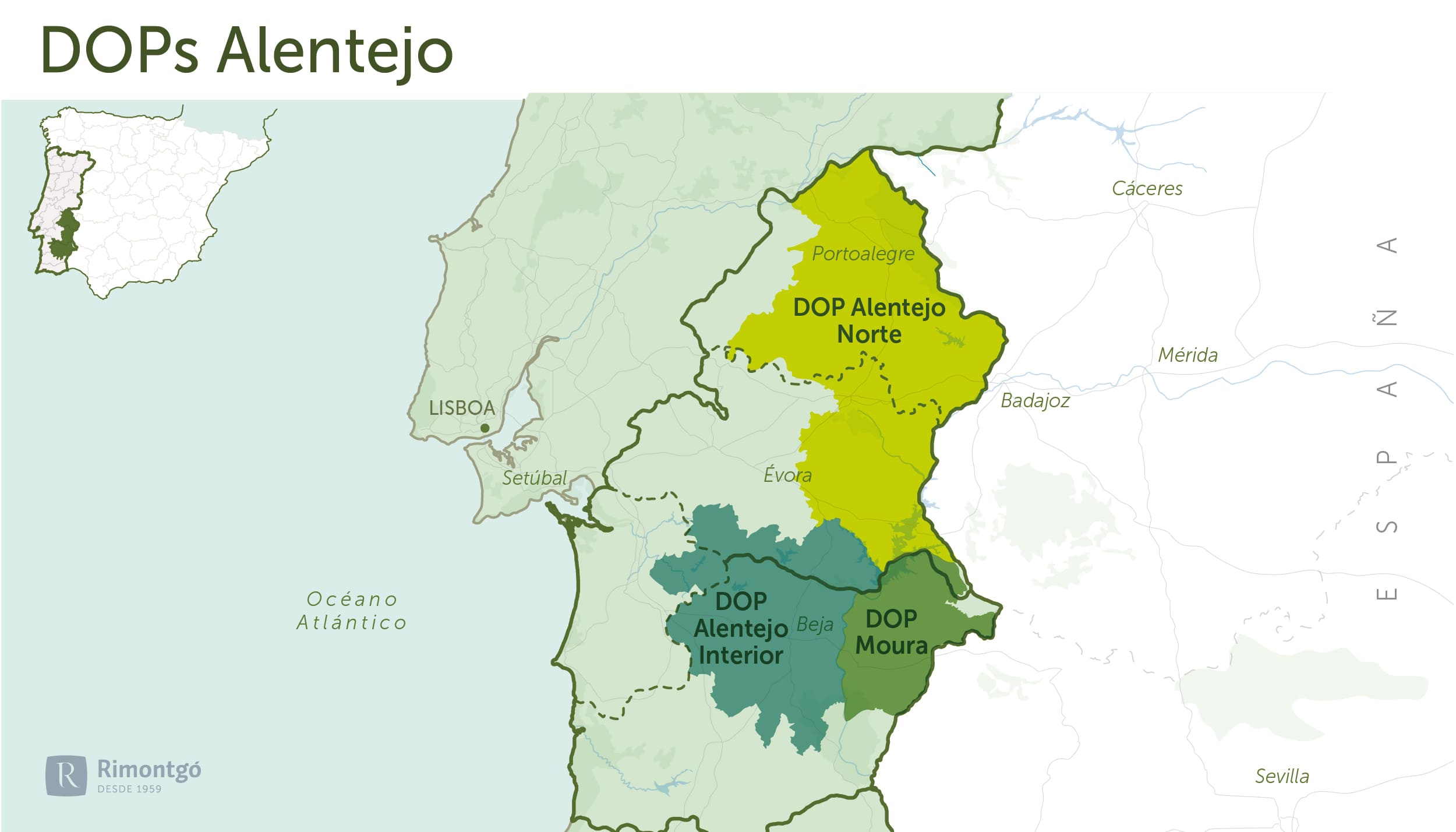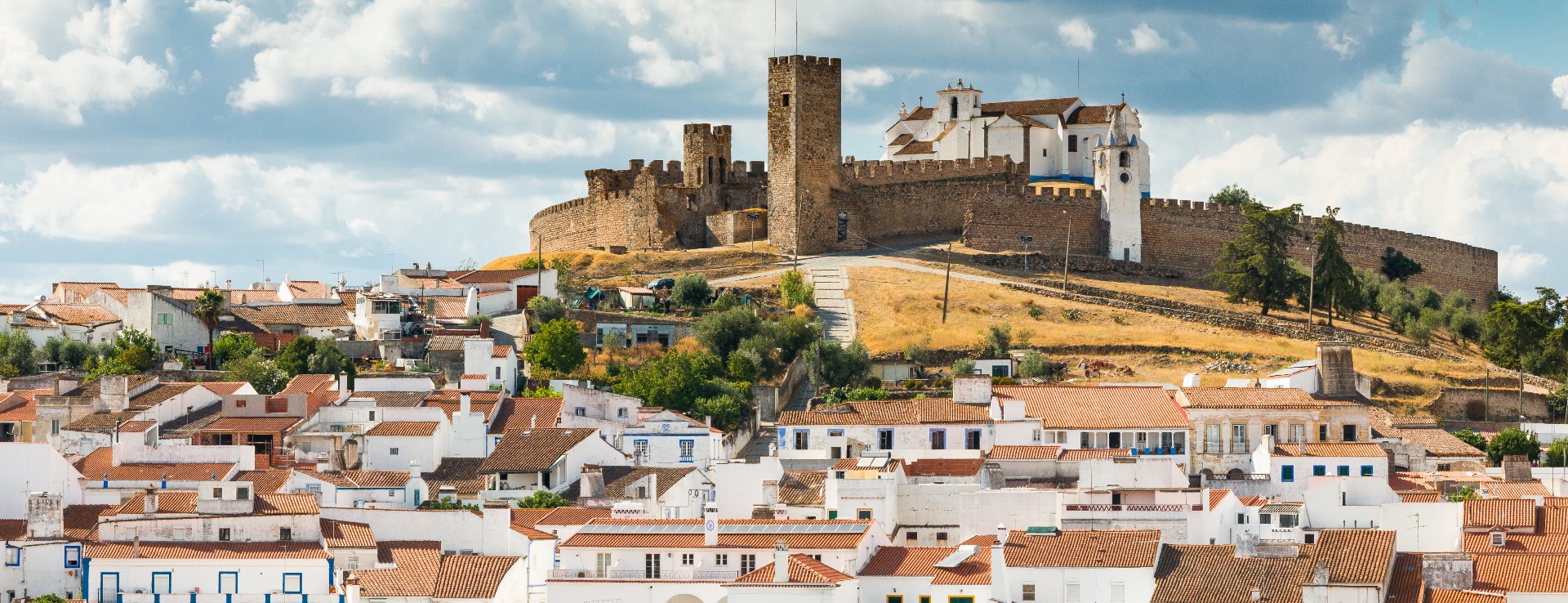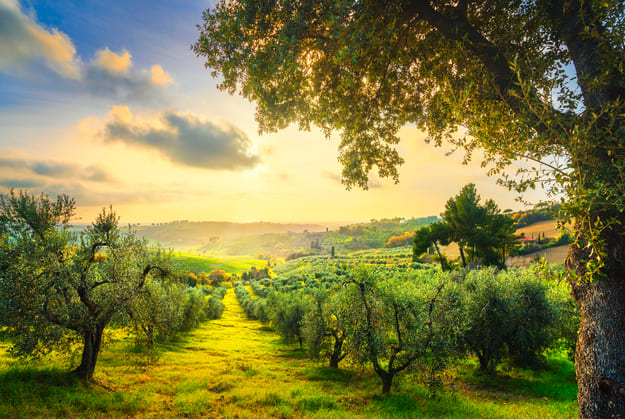Find your olive grove or oil mill
Infographic of the area

Alentejo
In Portugal, olive groves cover an area of 340,000 ha, the fourth largest in the European Union. The Alentejo alone produces 70% of Portuguese olive oil, ahead of the North and the Centre. In Alentejo, olive groves occupy 9% of the agricultural land. However, at national level, 50% of Portuguese olive groves are in the Alentejo, 20% in the North and 18% in the centre of the country.
The presence of the olive tree, a tree that stands out in the traditional Alentejo landscape, among cork oaks and holm oaks, dates back many centuries in the Alentejo lands. In this sense, Alentejo is considered the cradle of olive oil in Portugal.
It is worth noting that in the Alentejo area new plantations have been carried out since 2003/04, occupying around 40% of the surface area of this area with varieties such as Arbequina, Arbosana, Koroneiki and Picual, which are typical of intensive and super-intensive olive groves.
Climate and soils
Formed by acidic soils, it is a hilly region with a more oceanic Mediterranean climate than the neighbouring part of Spain. Most of the Portuguese cork oak trees are grown here, in the form of dehesa. Cork, olives and, to a lesser extent, vines are grown.
DOP Norte Alentejano
Olive Oils PDO Norte Alentejano are produced in the municipalities of Alandroal, Borba, Estremoz, in the parishes of Na Sr.ª de Machede, S. Mansos, S. Vicente do Pigeiro, S. Miguel de Machede and S. Bento do Mato in the municipality of Évora, in the parishes of Luz and Mourão in the municipality of Mourão, in the municipalities of Redondo, Reguengos de Mourão and Redondo in the municipality of Redondo. Bento do Mato in the municipality of Évora, the parishes of Luz and Mourão in the municipality of Mourão, the municipalities of Redondo, Reguengos de Monsaraz and Vila Viçosa in the district of Évora, the municipalities of Alter do Chão, Arronches, Avis, Campo Maior, Castelo de Vide, Crato, Elvas, Fronteira, Marvão, Monforte, Nisa, Portalegre and Sousel in the district of Portalegre.
History
It is said that Olive Oils from the North Alentejo were already being produced before the Roman and Visigothic times, remaining during the Arab domination. Gama Barros explains that it was in the most important areas of olive oil production that the Christian reconquest took place later. In the Middle Ages, olive oil took first place in the seasoning of foodstuffs.
Varieties
Extra virgin olive oil and virgin olive oil produced from the Galega olive variety (at least 65 %), the Azeiteira, Blanqueta, Redondil and Carrasquenha varieties may be tolerated up to a maximum of 5 % and Cobrançosa up to a maximum of 10 %.
The oils are produced with the varieties Galega, Blanqueta, Cobrançosa, Azeiteira, Carrasquenha, Redondil in PDO Norte Alentejano.
Alentejo Interior PDO
The Olive Oils of Alentejo Interior PDO are produced in the municipalities of Portel, Vidigueira, Cuba, Alvito, Viana do Castelo, Ferreira do Alentejo and Beja and in some parishes of Aljustrel, such as São João de Negrilhos and Ervidel. Some areas of Castro Verde, Alcaria Ruiva, in the municipality of Mértola, Torrão and Alcácer do Sal also produce this oil.
History
It is said that before Roman and Visigothic times, Olive Oils from the North Alentejo were already being produced, remaining during the Arab domination. Gama Barros explains that it was in the most important areas of olive oil production that the Christian reconquest took place later. In the Middle Ages, olive oil took first place in the seasoning of foodstuffs.
Varieties
Extra virgin olive oil and virgin olive oil produced mechanically from the olive varieties Galega Vulgar (60%), Cordovil de Serpa and/or Cobrançosa, present in a maximum of 40%.
Other varieties are tolerated, up to a maximum of 5%, with the exception of Picual and Maçanilha.
The oils are produced with the varieties Galega, Cordovil de Serpa, Cobrançosa in PDO Alentejo Interior.
Moura PDO
The production area of the olive oils covered by the Azeite de Moura Protected Designation of Origin (PDO) is made up of land located in the Alentejo municipalities of Moura, Serpa and Mourao.
The municipality of Moura PDO with 469 producers, 14.701 hectares and 1.754.000 litres produced, in Baixo Alentejo, is the main producer in Portugal.
History
Moura, the olive tree and olive oil have been linked since ancient times, as the Romans came here to find the culture of the olive tree and the production of olive oil. Even today, millenary olive trees can be found in the region. The proverb "as fine as Moura oil" is still alive in today's language.
Varieties
The oils are produced with the varieties Verdeal Alentejana, Cordovil, Galega in PDO Moura.
"Azeite de Moura" is an extra virgin olive oil and virgin olive oil, obtained by mechanical processes, from olives of the Galega, Verdeal and Cordovil varieties, resulting in an oil with its own chemical and sensory characteristics. The Verdeal variety makes up a maximum of 15-20% of the oil, the Cordovil variety a minimum of 35-40% and the Gallega variety the remaining percentage.
The defined geographical area is characterised by a certain homogeneity of soils, with gentle and moderate slopes where the Cordovil, Galega and Verdeal varieties predominate. These characteristics and the markedly Mediterranean agro-climatic conditions, with hot, dry summers, give rise to an oil with very different physico-chemical and, above all, organoleptic characteristics.
Subscribe to our mailing list to receive news about olive groves and oil mills.



